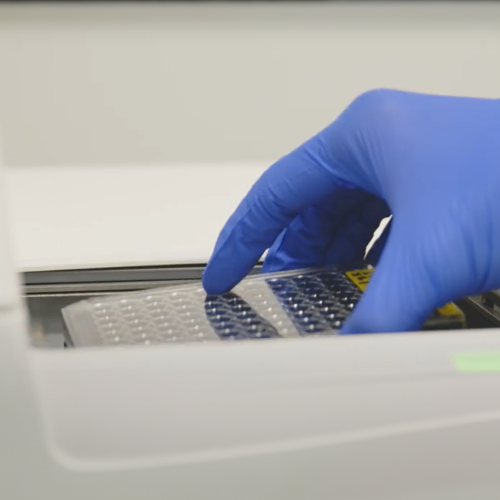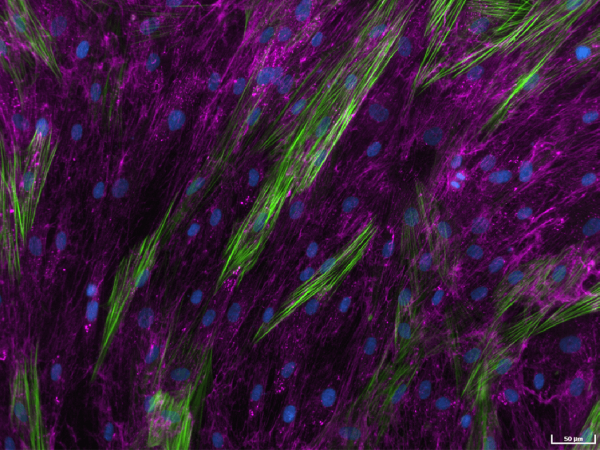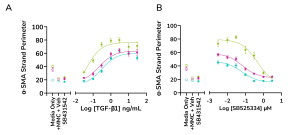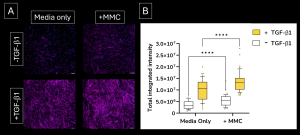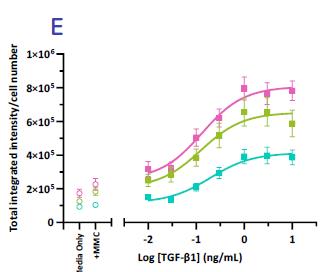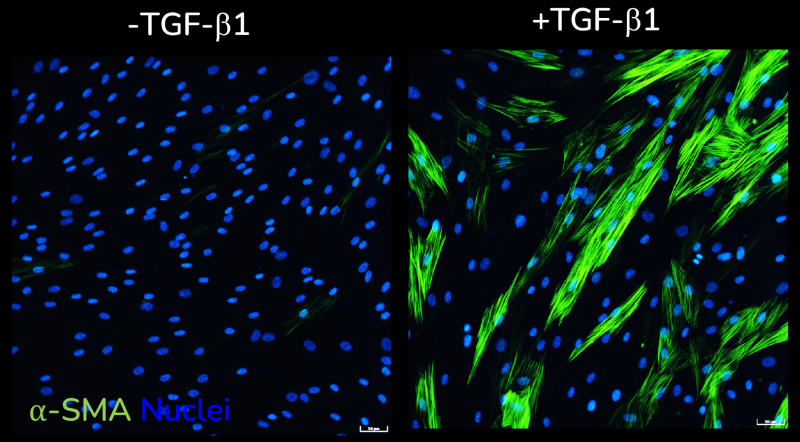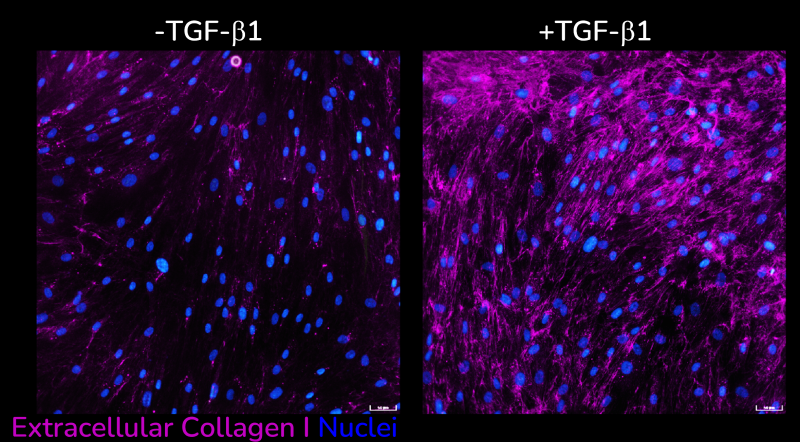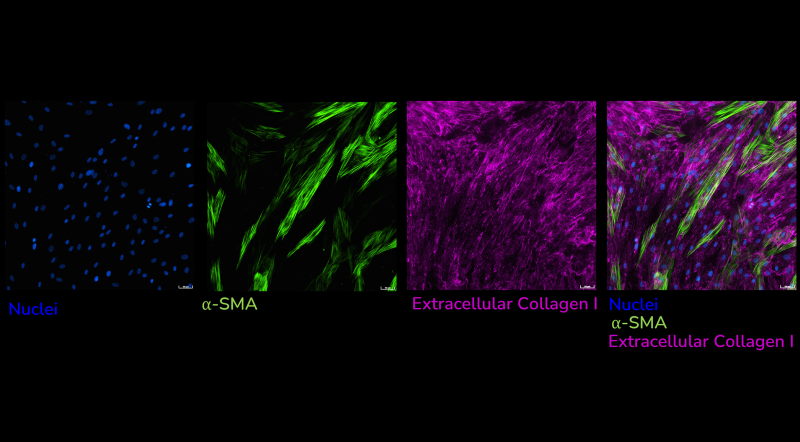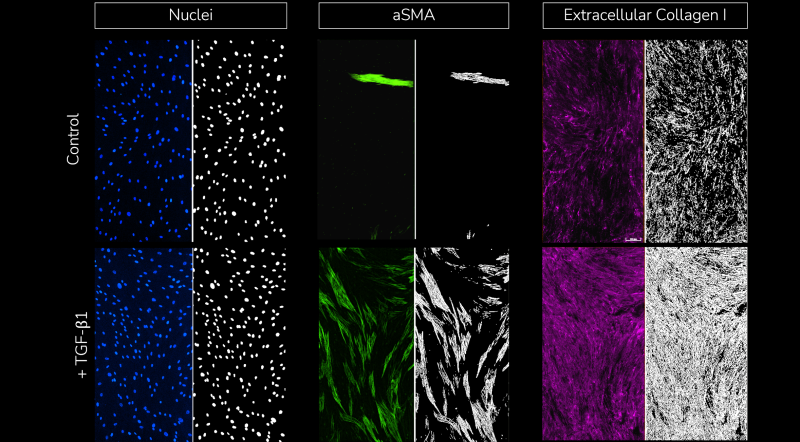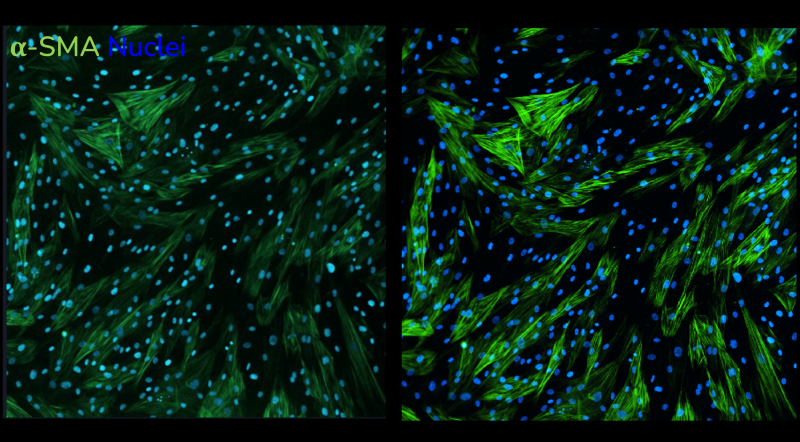High-throughput in vitro assessment of fibroblast-to-myofibroblast transition (FMT) using high-content imaging
The high-throughput, high-sensitivity FMT assay service has been specifically designed to accurately and rapidly study a compound’s ability to prevent lung fibroblast activation and reduce the deposition of extracellular matrix proteins following stimulation with the well-established fibrotic mediator TGF-β1.
Fibroblast-to-myofibroblast transition (FMT), sometimes referred to as myofibroblast transformation, is a cellular process where fibroblasts, which produce the extracellular matrix, differentiate into myofibroblasts, the primary cells responsible for producing excessive scar tissues in fibrotic diseases. Pulmonary fibrosis is scarring in the lungs, and our FMT assay tool can be used to test for this in lung airway models.
Human lung fibroblasts are tested for their ability to replicate stimulation with TGF-β1 in an FMT assay tool. During this process, fibroblast activation and extracellular matrix deposition is mimicked.
At Newcells, our phenotypic FMT assay setup allows for advanced testing of small molecule drugs at multiple concentrations. Phenotypic assays are used in drug discovery in the lung.
Using multiplexed detection, this FMT assay provides the accurate data needed to advance drug discovery programs by determining changes in cell count, α-SMA expression, α-SMA strand perimeter and extracellular collagen I deposition .
The rapid, high-throughput fibroblast-to-myofibroblast transition (FMT) assay service leverages our state-of-the-art imaging suite capabilities to accurately evaluate the efficacy of anti-fibrotic compounds with fibrosis-related marker readouts. Automatic quantification and analysis ensures objectiveness in data quality.
FMT Assay service outputs
- Cell count
- Automated quantification and analysis of extracellular collagen I deposition
- Automated quantification and analysis of α-SMA expression
- Automated quantification and analysis of α-SMA strand perimeter
